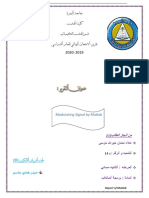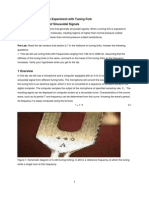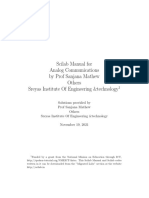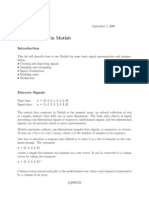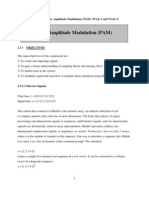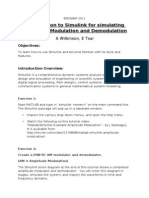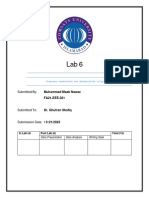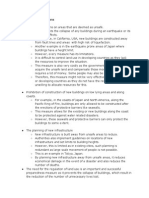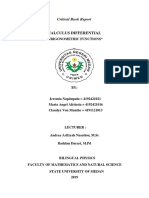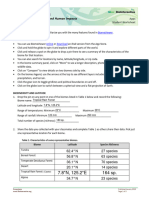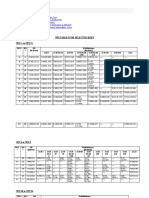0% found this document useful (0 votes)
66 views10 pagesPractical 4: Theory Spectrum Analyzer and Function Generator
This document discusses amplitude modulation and demodulation. It provides examples of modulating a 50 Hz sine wave sampled at 1000 Hz using the ammod function in MATLAB. Time and frequency domain representations are given for a 1 kHz cosine wave and a 1 msec square wave. The syntax of the modulation function is explained. Demodulation using the demod function is also covered.
Uploaded by
rizwanahmed06Copyright
© Attribution Non-Commercial (BY-NC)
We take content rights seriously. If you suspect this is your content, claim it here.
Available Formats
Download as DOCX, PDF, TXT or read online on Scribd
0% found this document useful (0 votes)
66 views10 pagesPractical 4: Theory Spectrum Analyzer and Function Generator
This document discusses amplitude modulation and demodulation. It provides examples of modulating a 50 Hz sine wave sampled at 1000 Hz using the ammod function in MATLAB. Time and frequency domain representations are given for a 1 kHz cosine wave and a 1 msec square wave. The syntax of the modulation function is explained. Demodulation using the demod function is also covered.
Uploaded by
rizwanahmed06Copyright
© Attribution Non-Commercial (BY-NC)
We take content rights seriously. If you suspect this is your content, claim it here.
Available Formats
Download as DOCX, PDF, TXT or read online on Scribd
/ 10




